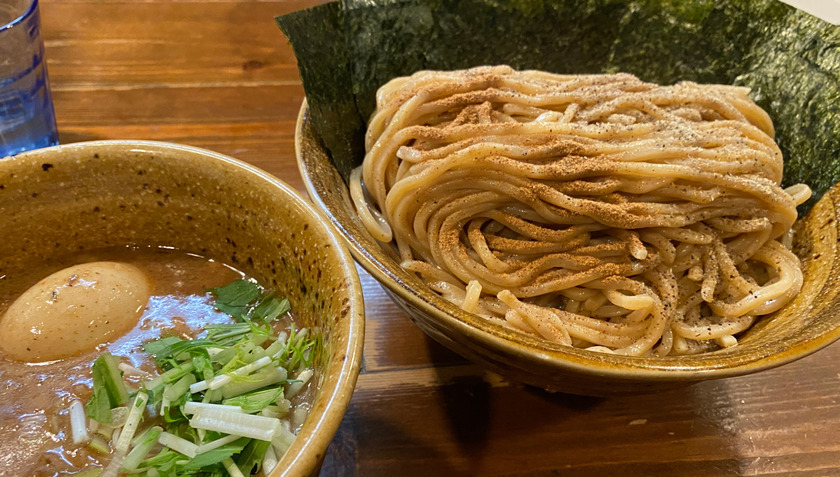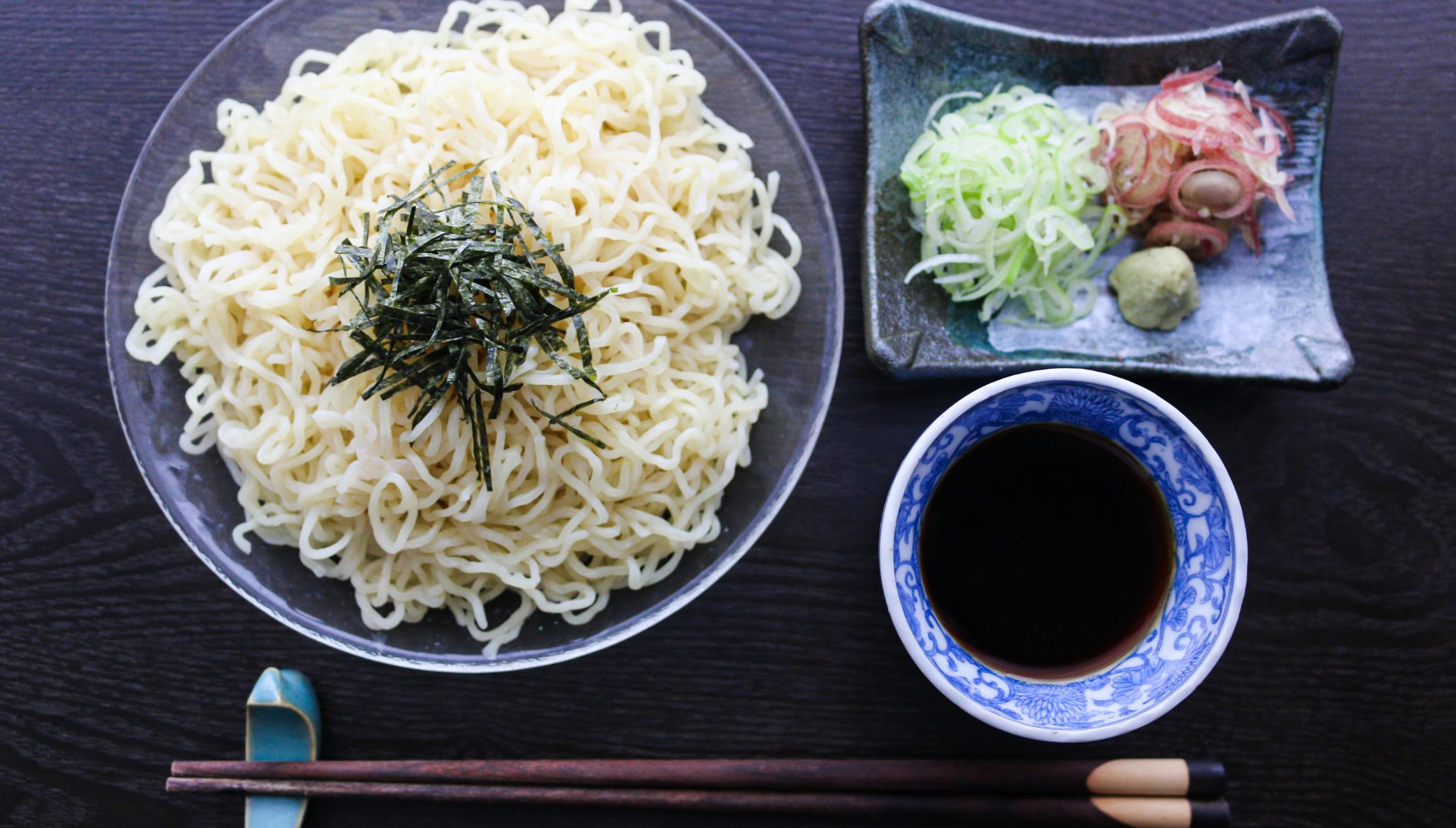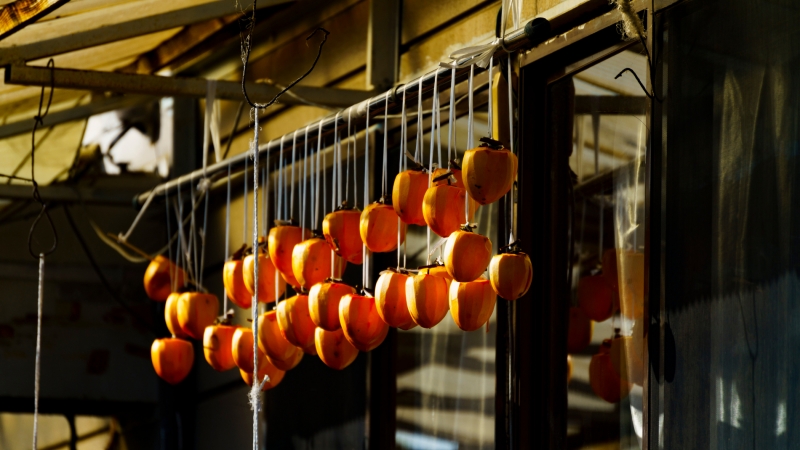Tsukemen (つけ麺) is not a world-famous dish like Ramen, but it is a favorite and pride of the Japanese, a dipping noodle dish consisting of cold noodles served with hot broth and many toppings.
Symphony of Japanese Cuisine
With “Tsuke” meaning dipping and “men” meaning noodles, Tsukemen is known as the dipping version of Ramen with a different flavor than traditional Ramen.
Known as the creator of Tsukemen, Kazuo Yamagishi lived in Nagano Prefecture and apprenticed at the Ramen Taishoken restaurant in Nakano. At the age of 17 (1950), he happened to see a co-worker eating Ramen by dipping the noodles in a bowl of soup, and the idea for this type of noodle flashed in his mind. Yamagishi wanted to create a dipping version of Ramen similar to Soba, adding that the broth would be sweet and sour, similar to Hiyashi Chuka (cold Ramen served in the summer).

Tsukemen ramen is a favorite dish and pride of the Japanese people.
After many experiments, in 1955, Yamagishi first introduced Tsukemen to the menu at his restaurant “Taishoken”. In just a short time, this dish became famous and loved by many people because of its novel way of eating (compared to that time). The flavor was also considered by many to be more outstanding than Ramen. But it was not until 1970 that this dish was officially called Tsukemen. However, the process of preparing this noodle dish required more ingredients than regular ramen. And it was several years later that this noodle dish was added to the menu for customers.

Where “Tsuke” means dipping and “men” means noodles, Tsukemen is known as a dipping version of Ramen with a different flavor from traditional Ramen.
At the time, the dish was called “tokusei mori” soba (literally “special soba”) – a name that remains on menus to this day. However, to avoid confusion with traditional chilled soba, Yamagishi chose the name “Tsukemen,” which means “dipping noodles,” and the dish has remained the same to this day.

Noodles are usually served cold, while soups are usually served hot.
A typical tokusei mori soba consists of a large bowl of noodles and a separate bowl of soup made with chicken, pork, fish, and vegetables, and topped with niboshi (dried sardines) or sababushi (smoked mackerel). When eating, diners gently stir the soup to mix the ingredients, then pick up a pair of chopsticks and dip the noodles into the soup. As Tokyoites' appetite for Tsukemen has grown over the years, restaurants have sought to meet and innovate this demand.

Tsukemen ramen is a ramen noodle dish but eaten in a special way, by dipping it in a bowl of soup or broth that is served separately.
More than a dish, a cultural experience
Tsukemen is a Japanese ramen dish, but with noodles and broth served separately in two different bowls. The noodles are usually served cold, while the soup is usually served hot. In addition, the noodles and sauce will have some other ingredients such as rolled eggs, seaweed or boiled eggs.

Ramen when served in tsukemen is often chilled by chefs to preserve the freshness of the noodles.
Unlike other types of ramen that are usually eaten in cold weather, Japanese people like to eat Tsukemen ramen on hot days. Because it is a dipping noodle dish, the purpose of keeping the noodles fresh and chewy until the diners enjoy the noodles, the noodles and soup are served in separate bowls so that the noodles do not fall apart in the hot broth.
The difference between the cold noodles and the hot broth is an interesting and addictive contrast when diners choose to try tsukemen. It is not uncommon to say that the noodles are more important than the broth in this dish, and often some restaurants will serve less broth than the noodles they serve in a meal.

Tsukemen has become a very popular dish in Tokyo and throughout Japan today.
It was this difference that helped Tsukemen become a "new wave" in the 2000s. A series of restaurants serving this dish sprung up in the Kanto region. Later, chefs also transformed the Tsukemen broth into many different versions such as: Hala Chicken Tsukemen, Italian Tsukemen, Tomato Shrimp Tsukemen...
Unlike Taishoken’s Tsukemen, which always maintains the same flavor, Taizo Nakagawa, managing director at Nakagawa Menya, believes that having a variety of flavors will give customers a different experience. “I want to show customers that there are many different ways to enjoy the dish,” he said. “Rather than keeping the same flavor from beginning to end, having many different versions keeps customers from getting bored. I think the taste and feeling depends a lot on how the dish is served.”

Unlike other types of ramen that are usually eaten in cold weather, Japanese people like to eat Tsukemen ramen on hot days.
With its unique flavor, interesting way of enjoying and diverse variations, tsukemen is not just a dish but also a symbol of Japanese cuisine. This noodle dish has conquered the hearts of many diners around the world, affirming its position as a specialty dish that cannot be missed when coming to the land of cherry blossoms.



































